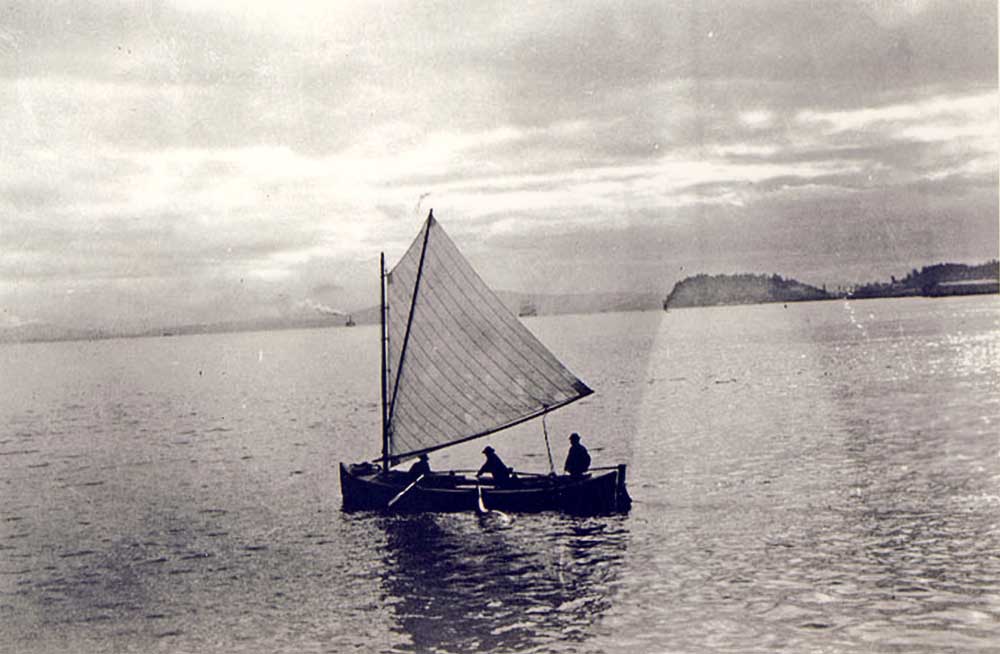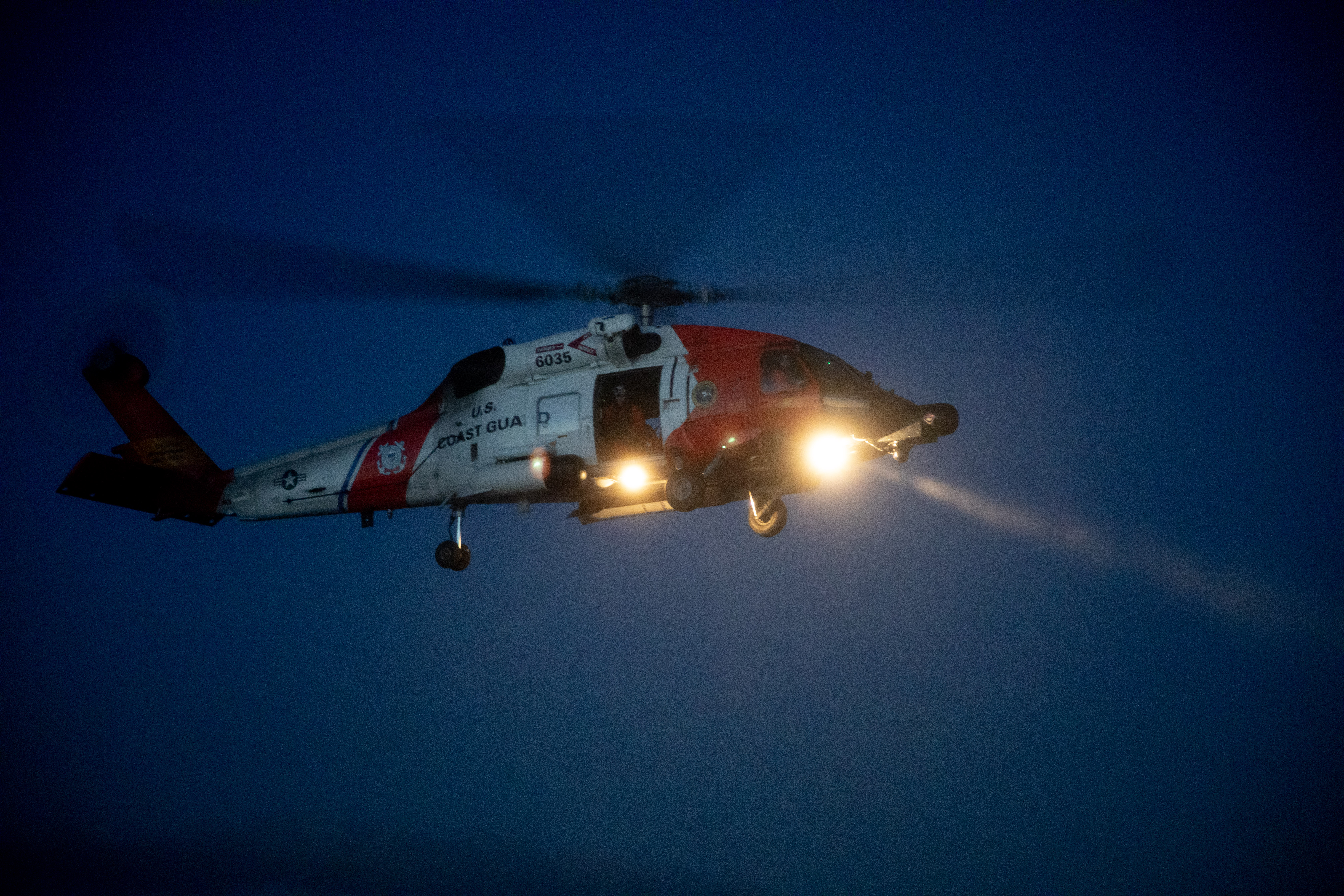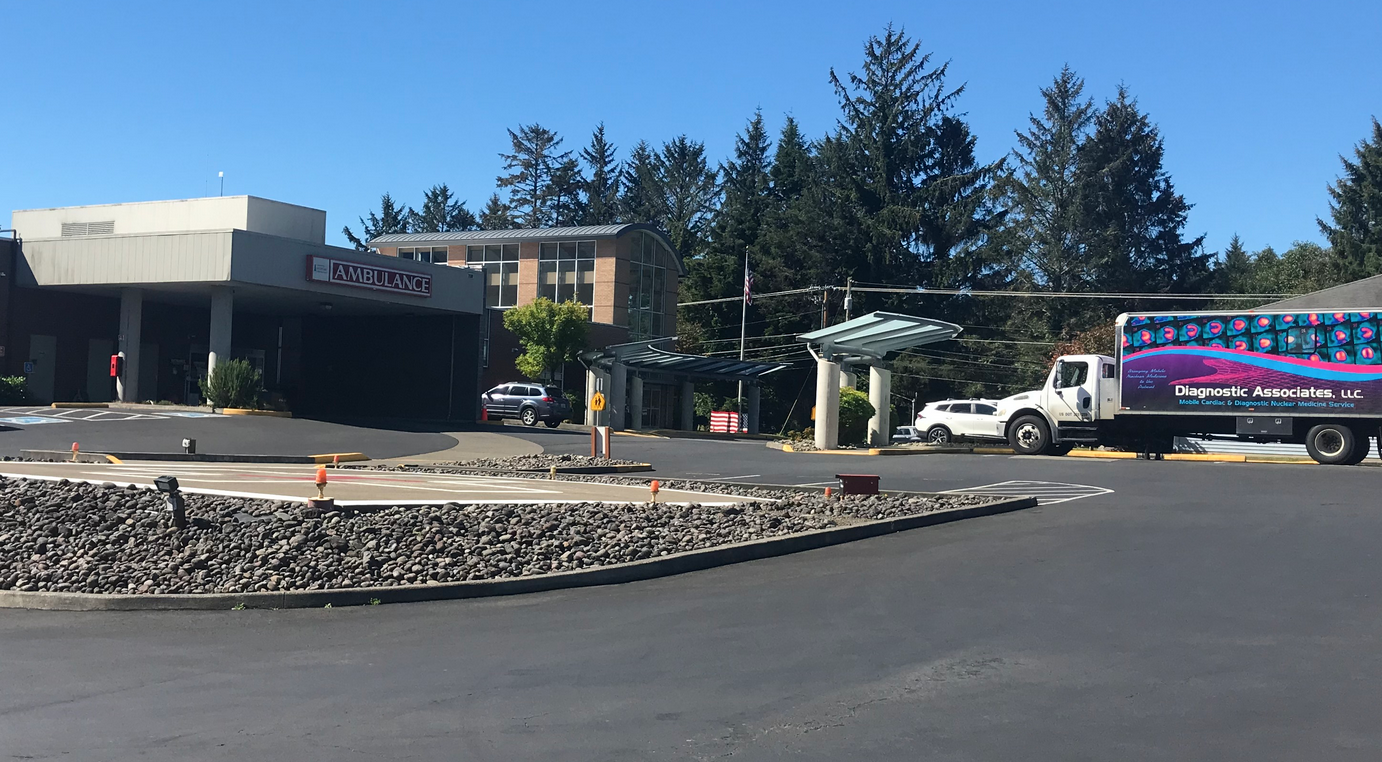‘This Nest of Dangers’ May 1880: How legends come to be
Published 11:29 am Thursday, March 29, 2018

- Gillnetting was mostly an overnight activity, with two men in a boat. This photo of a three-man crew appears to have been taken a dawn, perhaps in the vicinity of Washington's Point Ellice, with Tongue Point in the background.
When I came to the North Coast, I worked for a time at a bookstore in Long Beach which sold a lot of Jim Gibbs’ book “Pacific Graveyard,” his classic tales of shipwrecks in our nearby waters. One particularly traumatizing story was about the sinking of a whole fleet of small sailing gillnet boats in a single storm, May 4, 1880. Over 200 fishermen were said to have died in that one episode.
Trending
Goodness …
One morning in November 1981 bookstore owner Val told me that her contractor, Joe Gisler, might have lost his son the night before. Norm Gisler was one of four crew members on the 86-foot Midnight Express, a trawler which went down off Tillamook Head. Only one man, owner George McMurrick, made it safely to shore. Later that day my friend Sydney mentioned having the son of another crew member, Patrick Akines, in her primary school class. Jim Brewer was the third crewman lost in the sinking.
I began to wonder: if this newcomer knew people who knew two of those four involved in that disaster, how would the smaller community of 1880 have been affected by the loss of 200 fishermen in one storm? Wouldn’t we still be talking about it? Wouldn’t the community still be in shock, as are some Great Lakes communities over the sinking of an ore boat? Wouldn’t there be statues or public monuments?
Trending
Later, as I began research for this project, I looked at the local newspapers of the day to see what they recorded.
DeWitt Clinton Ireland, founding editor of The Tri-Weekly Astorian and The Daily Astorian, was no journalistic greenhorn. Born on the 4th of July 1836, in Vermont, Ireland learned typesetting at school in Indiana, worked for the Mishawaka Free Press, the Chicago Herald, the New York Tribune, the Detroit Free Press, Scribner’s, and the St. Paul Pioneer Press. Author George S. Turnbull said, in History of Oregon Newspapers, “Just before starting west [in 1862, Ireland] served 90 days as a volunteer in the Union army. … A short period of work on ‘the old mission farm’ at The Dalles, two years on the Oregon City Enterprise, a spell of running a pack train into the Boise basin placer diggings, a bit of prospecting on the Fraser river, in British Columbia, where he made some money, a successful investment in an Astoria salmon cannery, and he was ready to start the Astorian,” which he did May 1, 1876.
By today’s standards, the salmon fishing boats of those days were small, perhaps 26 feet long, although they feel big and heavy when you stand next to them. One of them rests inside Astoria’s Pier 39 near the coffee shop, another at the Columbia River Maritime Museum. They were powered by sail and by oar, and were manned by two men — the captain, who tended the net, and the “boat puller,” who rowed.
When their two sails were set, they reminded onlookers of butterflies dancing across the river. In 1878 Nellie Megler wrote in the Astorian, “It is a pretty sight, in the early twilight of a pleasant day to see the boats, with sails all spread, skimming along the water, on their way to the fishing grounds.”
Gillnetters fish for salmon with long “gillnets,” woven nets suspended vertically in the water between a rope suspended at the top by cork floats, and weighted at the bottom with lead. The nets, perhaps 250 fathoms long and 20 feet top to bottom, were laid out across the incoming tide with its incoming fish, who swam into the nets and were caught by the gills. Then, as now, the fishing was generally done in the evening and at night, so the salmon couldn’t see, and avoid, the net. In those days, boats were generally owned by the cannery.
On Tuesday, May 4, 1880, while the gillnetter fleet was fishing, a sudden and violent squall blasted out of the southwest.
“My boat was at anchor,” survivor C. Christiansen told the Oregonian reporter, “when a very heavy sea came and upset her almost alongside of James Hainson’s boat. She righted immediately. My boat filled. Hainson then got in the boat, but I was entangled in the net and I could not get in until a breaker threw me in. … then we drifted opposite Megler’s station shouting for help.
“Hainson said we can never be saved. … A moment after, a breaker came and threw me out of the boat almost on the beach. After a struggle with the breakers I succeeded in reaching land. I never saw anything more of Hainson …
“Hainson had lashed himself to the boat, and died there, as his body was seen lying over the bow of the boat, stiff and rigid.”
“Started out to fish on May 4th at 2 P.M.,” reported John McNeil, boat puller for Erickson in cannery man George W. Hume’s boat No. 40, “sailed down towards Baker Bay; rode at anchor during a squall; it afterwards lulled down; then we laid our net out; came on to blow very heavy from the southwest; drifted with net for about four hours or more; wind increased to a lively gale; sea was breaking very heavily; saw several boats capsize[;] … as the breakers were running very high and the wind was still increasing, we were under the necessity of letting go our net or else lose our lives, so we let go …; after being [driven] ashore and hauling our boat well upon the beach, we observed a swamped boat driving ashore with a man standing up in her.
“My partner and self determined to render what assistance we could to the unfortunate man. So we ran along the beach towards his boat and just arrived in time to see him leave it and struggle towards the shore but the poor fellow was too far gone and would have been drowned had not [we] … rushed into the water and dragged him ashore. After which we took his wet clothes off him and took a shirt apiece off our own backs and put them on him.
“Afterwards we started through the brush as the tide was up over the beach. From Scarborough hill we had a difficult journey to the point, as our poor friend was very weak. After a fruitless search for the trail leading to the house of Mr. McGowan we were obliged to give it up and take shelter in an old sheep hut which stands on the hill …
“As soon as day began to break we set out for the dwelling house of Mr. McGowan; upon arriving there we found five other companions in misery, we three making eight in all who had experienced similar hair breadth escapes. The good people of the house did all they possibly could to make us comfortable. …”
On May 5, 1880, Astorian editor Ireland began to sort out the horrible episode: “Many exaggerated statements were afloat yesterday concerning the loss of boats, nets and men fishing, night before last. We could not get reliable data to base anything like a correct report upon. …”
“Mr. Joseph Hume’s steamer Quickstep arrived from Knappton yesterday … with her colors at half-mast, which drew a crowd of people together at the landing. Capt. Turner had the body of a man on board which he had picked up afloat in the bay, and two of Devlin and company’s boats in tow, one of which was swamped. He reported one of the Astoria Fishing company’s boats ashore at Chinook, and the net on the sands …”
• • •
“Capt. W. P. Whitcomb of the steamer Gen. Canby … says that four boats came into Baker’s bay without men or gear yesterday morning. One other boat of the Aberdeen Packing company had not been heard from at noon; one of the same company’s boats attempted to get into Wallicut, capsized, and one of the men was drowned. Four other boats were reported by reliable persons in the breakers, swamped, without men in them, half a mile below Scarboro hill.”
The next day, May 6, 1880, Ireland reported, “Casualties. Great Loss of Life and Property. … Joseph Hume has picked up a large yellow boat. … Kinney’s [boat] No. 6 is reported to have lost one man. … Peter J. Blagan, an independent fisherman, is reported lost. … Two of J. G. Megler Co.’s boats are supposed to be among the fleet lost. … Wm. Hume’s No. 10, Mr. Geo. Adams, a noble good man, is reported lost. … All sorts of rumors are afloat. We give only such as we feel justified in placing any confidence in. … The Anglo-American Packing Co. No. 11 drifted out to sea. Men and gear supposed to be lost. … Two boats and nets were picked up yesterday morning afoul of the barkentine North Bend, lying at Grays dock. … Many boats came in yesterday without a fish and the men in them were thankful that they had saved their lives. … Mr. Kyle and partner report that they, with others, were two days on Sand Island, no food, fire, nor other comforts. … Hans Hansen of Geo. W. Hume’s No. 28 is reported lost; also Henry Heinson of boat 32, same cannery. Jas. Hansen of 32 was saved. … A few weather-bound fishermen return grateful thanks for generous hospitalities extended to them by members of Hapgood’s boats at Tongue point yesterday morning. … Mr. Ackland reports seeing two men on the bottom of a blue boat, lead colored bottom, nearing the breakers yesterday morning. He could do nothing to save the men, and they bid him farewell by tipping their hats as they entered the jaws of death. …”
Ireland continued to report specific information on May 7th: “Nicholas Manuel reports that his scow and everything in it, went to pieces on the beach near Barney’s point … and a man by the name of George Ethen, who was with him, was drowned. The men in Megler and Co.’s boats No. 8 and 11 were lost. … One or two fishermen that have been reported drowned, came in safely yesterday. Kinney No. 6 reported lost, also came in yesterday. A great many boats took refuge in Chinook river from the storm.”
On May 8, the dirge continued, “Great Loss of Life. From the best sources that we have been able to obtain information, the losses of life by the late storm on this bay, foots up to nineteen men. Some of those still missing may yet come in alive.”
Clearly, this had been no ordinary storm. The Morning Oregonian of May 7 started a long report headlined, “A Day of Terrors; Twenty-Five Fishermen Drowned; Disasters on the Bar,” and told of the steamer Rip Van Winkle, whose captain Al Harris succeeded in saving a handful of fishermen from overturned boats, and of the lighthouse keeper who, in the morning, saw three boats “going out over the bar bottom up.”
“It is impossible to make a correct summary of the total loss of either life or property. It is roughly estimated, however, that not less than 25 lives have been lost and probably 10 or 15 boats and nets. It has also been impossible to procure the names of all who were lost; some of them, however, are old fishermen and highly respected, and their untimely end has cast a sad gloom over the entire community.”
(Men drowned because, in the contest of strength between oars and surging waves in those days before engines, water power usually won. They usually placed themselves, their boat, and their nets as close to the bar as they dared because that’s where the salmon were thickest, congregating to enter the river. Also, the weather and the stage of the tide made the bar perilous. The water is numblingly cold, bodies immersed in it more than a handful of minutes can’t move well. And again, those fishermen were dressed to withstand the wind, the rain, and the six hours or so of incoming tide and running salmon — obituaries record bodies found dressed in layers, “one white shirt, one coarse gray woolen shirt, one pair coarse cotton drawers, one pair blue overalls, 1 pair duck overalls, black vest, faded black beaver coat, southwester and oil skin coat.” He probably also had gum boots on. Plus, many fishermen couldn’t swim.)
Appalled California newspapers picked up the story from exchanged copies of the Oregonian and Daily Astorian.
Then, months later, on Sept. 4, 1880, the San Francisco Chronicle published a new story under the headline, “The Fatal Bar. Hundreds of Salmon Fishermen Drowned This Season.” Four Columbia River fishermen were interviewed at length by the Chronicle. William Johnson, Thomas McKenna, Antone Beretta, and Stephen Ellis figured that the loss of life among the fishing fleet for the season of 1880 amounted to between 200 and 350. “The business of fishing for salmon on the Columbia river is a highly dangerous one, if the fishermen just returned from the canneries speak the truth. Some assert that as many as 350 fishermen lost their lives this season on the Columbia.”
This September article about the heavy losses for the season of 1880 was telegraphed around the nation and reprinted by seemingly everyone. D.C. Ireland even reprinted it for the edification of his readers, calling it “An Extraordinary Fish Story,” adding, “We present to-day, from the San Francisco Chronicle of [September] 4th inst., one of the most exaggerated statements concerning the salmon fishing business at this port that we have yet seen in print. … We give the article as we find it, for the benefit of those who know better, merely to show to what extent exaggerations of this class have the capacity for spreading. …”
Ireland continues, “The Astorian has from time to time published … accounts of every loss it was possible to learn the particulars of, and while the loss of life was great, … it does not amount to twenty per cent of the figures given to the Chronicle reporter.”
Somehow, in the years since those deadly times, the grossly overstated numbers of lost fishermen were not only attributed to one three- or four-month season of 1880, but even to one storm, that of May 4, 1880. (This writer wonders if the Chronicle reporter interviewed those four fishermen over schooners of beer at the local watering hole …)
Maritime historian Jim Gibbs picked up the inflated story as having happened in one storm and wrote it into his classic 1964 book “Pacific Graveyard.” That became the basic — and only — reference on the subject of Columbia river shipwrecks and remained so for many years.
News writers pulling together “local color” articles don’t have the time, or the hunch, to check their reference’s own sources. An error gets repeated and after a while jells into “fact.”
And that’s how legends happen.









